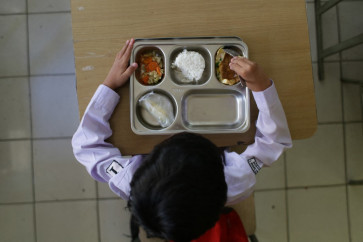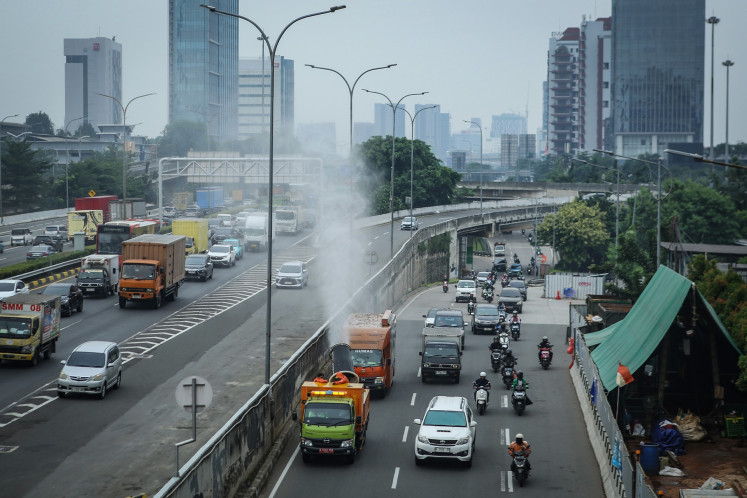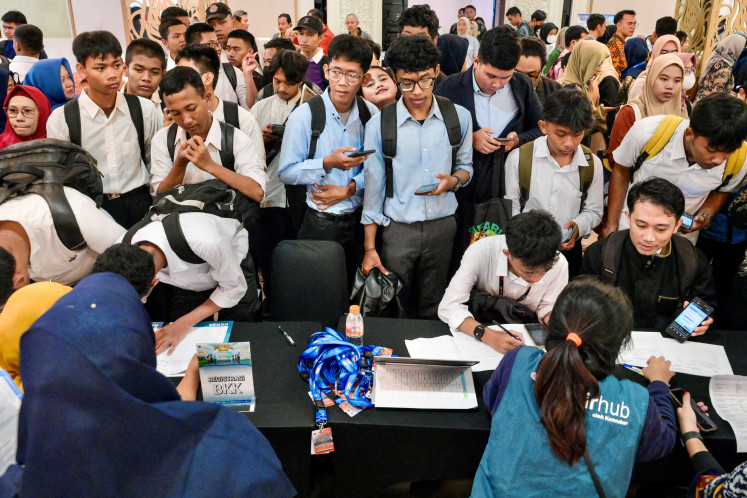Popular Reads
Top Results
Can't find what you're looking for?
View all search resultsPopular Reads
Top Results
Can't find what you're looking for?
View all search resultsExxonMobil kicks off oil production at new field in Cepu Block
ExxonMobil Cepu Limited, part of Texas-based oil giant ExxonMobil, has begun production at its Kedung Keris oil field in the Cepu Block, East Java, eight years after discovering the field
Change text size
Gift Premium Articles
to Anyone
E
xxonMobil Cepu Limited, part of Texas-based oil giant ExxonMobil, has begun production at its Kedung Keris oil field in the Cepu Block, East Java, eight years after discovering the field.
Kedung Keris, which holds an estimated 20 million barrels in oil reserves, has the capacity to produce 5,000 barrels of oil per day (bopd), the company said.
“This production rate is expected to help sustain the average production of the Cepu Block, which is currently producing more than 25 percent of national oil production,” said ExxonMobil Cepu president Louise McKenzie during an event to mark the commercial production of the new oil field on Tuesday.
According to Upstream Oil and Gas Regulatory Special Task Force (SKKMigas) data, ExxonMobil Cepu was Indonesia’s largest oil producer in this year’s first half with output of 216,000 bopd during the period.
To maintain production rates, ExxonMobil invested US$76 million and two years to develop the Kedung Keris field. The investment was, among other activities, for drilling a well and installing a 15-kilometer underground oil pipe running from the Kedung Keris field to the neighboring Banyu Urip field, where the company runs an oil processing
facility.
Going forward, the company plans to increase the production of the Kedung field to 10,000 bopd once the Environment and Forestry Ministry concludes the Environmental Impact Analysis (Amdal) that allows higher production rates within the block.
Due to environmental concerns, the ministry limits oil production at the Cepu Block to 220,000 bopd, all of which had been coming from the Banyu Urip field.
“Kedung Keris will be producing about 3,800-5,000 [bopd] until we can open it up some more,” said McKenzie, who is also the president of the Indonesian Petroleum Association (IPA).
“This production rate is expected to help sustain the average production of the Cepu Block, which is currently producing more than 25 percent of national oil production.”
She added that ExxonMobil had met with environment ministry officials earlier this week and expected the new assessment to come out within two months.
Speaking at Tuesday’s launch, SKKMigas head Dwi Soetjipto told reporters that his office and ExxonMobil sought to increase the production limit to 235,000 bopd, which internal tests showed was still “within a safe position”.
“We expect the block to produce 225,000-230,000 bopd,” he said. “While operating the block, we have to pay attention to the facilities, water reservoir levels and so on, such that we might not necessarily be running at 235,000 bopd.”
Environmental ministry officials were not immediately available for comment.
Kedung Keris is one of eight listed oil and gas projects that SKKMigas earlier expected to be operational by this year’s fourth quarter. The task force expected the field to come onstream by December with total investments at $72 million and production at 3,800 bopd — the largest such values out of four oil projects on the list.
With the Bison, Iguana and Gajah Puteri (BIGP), Kedung Keris and Temelat projects operational and the YY project busted after July’s oil spill, SKKMigas has four more oil and gas projects to oversee this year.
The Cepu Block is operated by ExxonMobil Cepu Limited, which holds a 45 percent interest in the block. Pertamina EP Cepu (PEPC), a subsidiary of oil and gas giant Pertamina, holds another 45 percent of the Cepu Block, while the remaining 10 percent is owned by the Cepu Block Cooperation Body, which is made up of locally owned companies run by the administrations of Blora regency, Bojonegoro regency, East Java province and Central Java province.
Energy and Mineral Resources Minister Arifin Tasrif said in a video exclusively made for Tuesday’s launch that the Cepu Block played an important role in reducing the country’s trade deficit, a large part of which comes from oil imports.
Statistics Indonesia data show that the country’s oil deficit amounted to $1.08 billion in November, a significant 33 percent less than in the same month last year, but still a source of pressure on the rupiah exchange rate.










